Athman Bouguettaya
Reactive Composition of UAV Delivery Services in Urban Environments
Apr 29, 2024Abstract:We propose a novel failure-aware reactive UAV delivery service composition framework. A skyway network infrastructure is presented for the effective provisioning of services in urban areas. We present a formal drone delivery service model and a system architecture for reactive drone delivery services. We develop radius-based, cell density-based, and two-phased algorithms to reduce the search space and perform reactive service compositions when a service failure occurs. We conduct a set of experiments with a real drone dataset to demonstrate the effectiveness of our proposed approach.
Immersive 3D Simulator for Drone-as-a-Service
Oct 29, 2023



Abstract:We propose a 3D simulator tailored for the Drone-as-a-Service framework. The simulator enables employing dynamic algorithms for addressing realistic delivery scenarios. We present the simulator's architectural design and its use of an energy consumption model for drone deliveries. We introduce two primary operational modes within the simulator: the edit mode and the runtime mode. Beyond its simulation capabilities, our simulator serves as a valuable data collection resource, facilitating the creation of datasets through simulated scenarios. Our simulator empowers researchers by providing an intuitive platform to visualize and interact with delivery environments. Moreover, it enables rigorous algorithm testing in a safe simulation setting, thus obviating the need for real-world drone deployments. Demo: https://youtu.be/HOLfo1JiFJ0
Positional Encoding-based Resident Identification in Multi-resident Smart Homes
Oct 27, 2023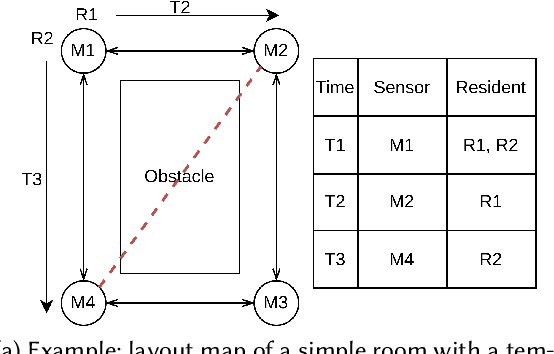
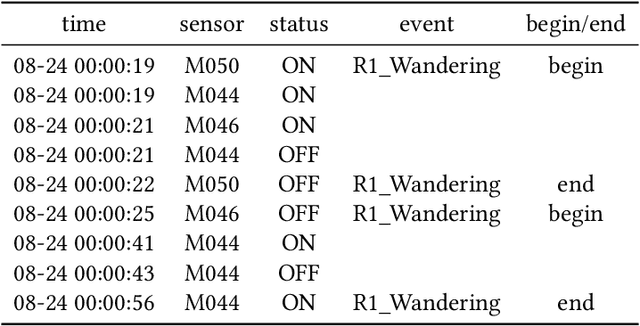
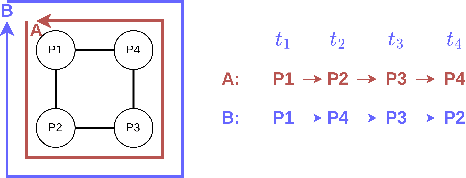
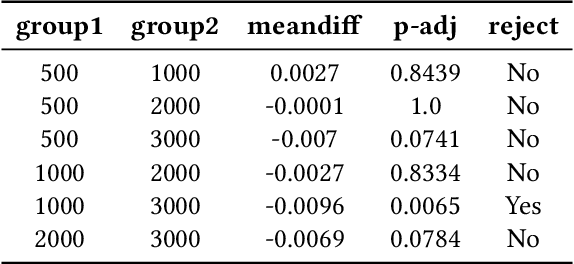
Abstract:We propose a novel resident identification framework to identify residents in a multi-occupant smart environment. The proposed framework employs a feature extraction model based on the concepts of positional encoding. The feature extraction model considers the locations of homes as a graph. We design a novel algorithm to build such graphs from layout maps of smart environments. The Node2Vec algorithm is used to transform the graph into high-dimensional node embeddings. A Long Short-Term Memory (LSTM) model is introduced to predict the identities of residents using temporal sequences of sensor events with the node embeddings. Extensive experiments show that our proposed scheme effectively identifies residents in a multi-occupant environment. Evaluation results on two real-world datasets demonstrate that our proposed approach achieves 94.5% and 87.9% accuracy, respectively.
Failure-Sentient Composition For Swarm-Based Drone Services
May 23, 2023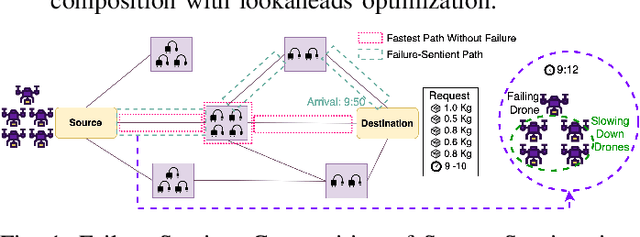
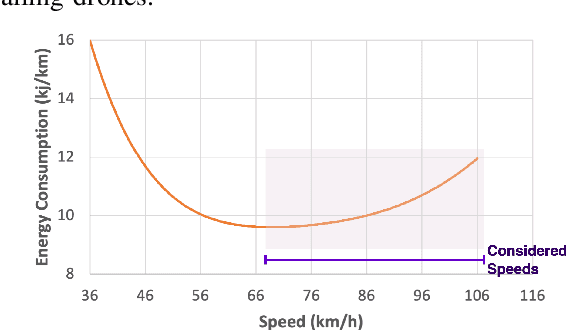
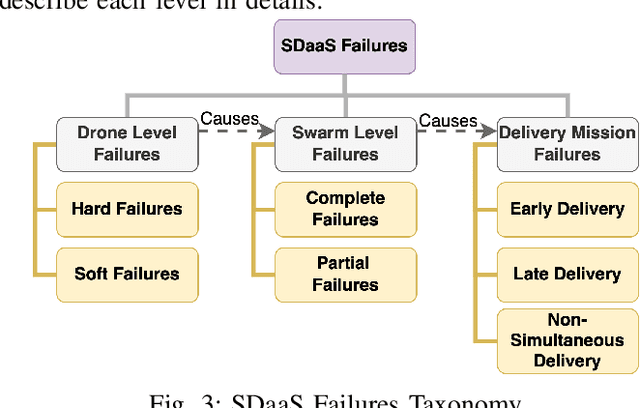

Abstract:We propose a novel failure-sentient framework for swarm-based drone delivery services. The framework ensures that those drones that experience a noticeable degradation in their performance (called soft failure) and which are part of a swarm, do not disrupt the successful delivery of packages to a consumer. The framework composes a weighted continual federated learning prediction module to accurately predict the time of failures of individual drones and uptime after failures. These predictions are used to determine the severity of failures at both the drone and swarm levels. We propose a speed-based heuristic algorithm with lookahead optimization to generate an optimal set of services considering failures. Experimental results on real datasets prove the efficiency of our proposed approach in terms of prediction accuracy, delivery times, and execution times.
CrowdWeb: A Visualization Tool for Mobility Patterns in Smart Cities
May 22, 2023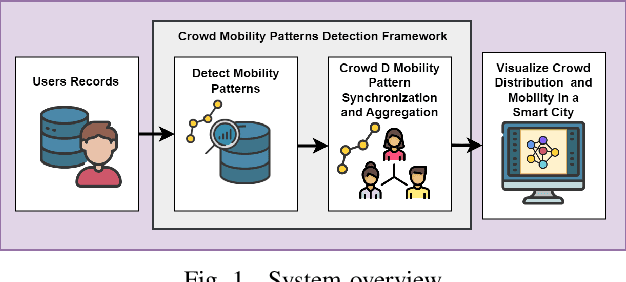
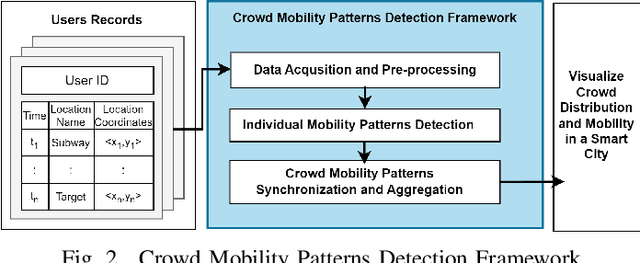
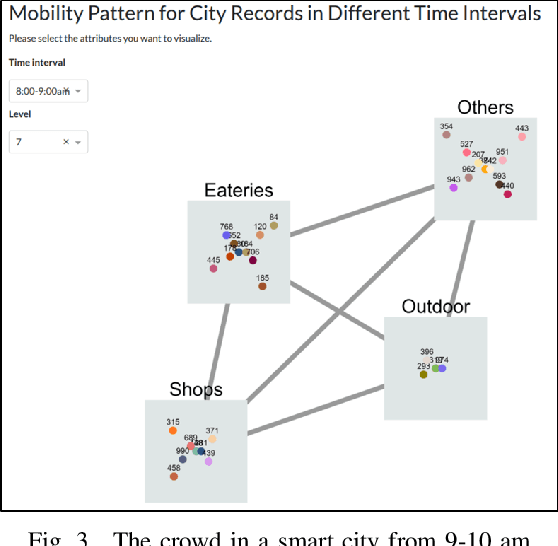
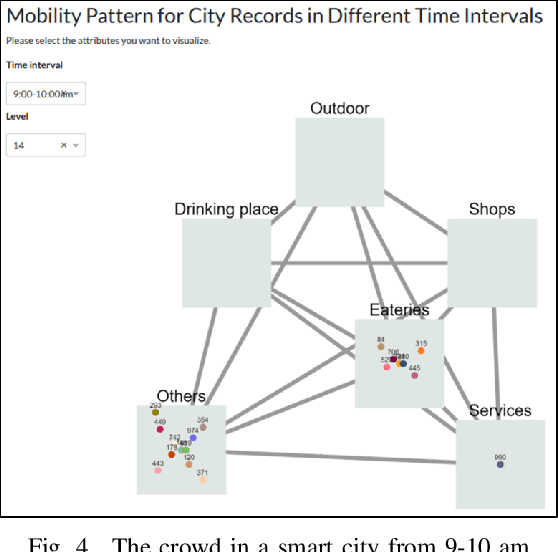
Abstract:Human mobility patterns refer to the regularities and trends in the way people move, travel, or navigate through different geographical locations over time. Detecting human mobility patterns is essential for a variety of applications, including smart cities, transportation management, and disaster response. The accuracy of current mobility prediction models is less than 25%. The low accuracy is mainly due to the fluid nature of human movement. Typically, humans do not adhere to rigid patterns in their daily activities, making it difficult to identify hidden regularities in their data. To address this issue, we proposed a web platform to visualize human mobility patterns by abstracting the locations into a set of places to detect more realistic patterns. However, the platform was initially designed to detect individual mobility patterns, making it unsuitable for representing the crowd in a smart city scale. Therefore, we extend the platform to visualize the mobility of multiple users from a city-scale perspective. Our platform allows users to visualize a graph of visited places based on their historical records using a modified PrefixSpan approach. Additionally, the platform synchronizes, aggregates, and displays crowd mobility patterns across various time intervals within a smart city. We showcase our platform using a real dataset.
Energy Loss Prediction in IoT Energy Services
May 16, 2023Abstract:We propose a novel Energy Loss Prediction(ELP) framework that estimates the energy loss in sharing crowdsourced energy services. Crowdsourcing wireless energy services is a novel and convenient solution to enable the ubiquitous charging of nearby IoT devices. Therefore, capturing the wireless energy sharing loss is essential for the successful deployment of efficient energy service composition techniques. We propose Easeformer, a novel attention-based algorithm to predict the battery levels of IoT devices in a crowdsourced energy sharing environment. The predicted battery levels are used to estimate the energy loss. A set of experiments were conducted to demonstrate the feasibility and effectiveness of the proposed framework. We conducted extensive experiments on real wireless energy datasets to demonstrate that our framework significantly outperforms existing methods.
Optimizing Drone Delivery in Smart Cities
Apr 28, 2023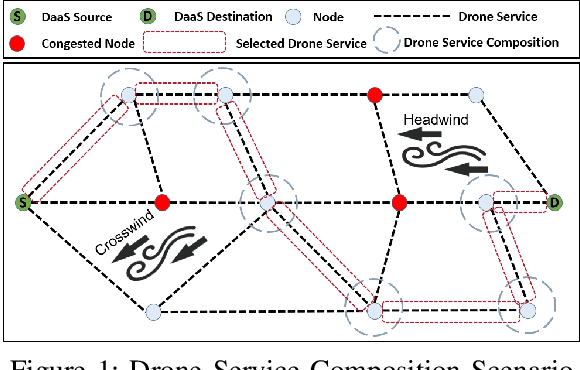
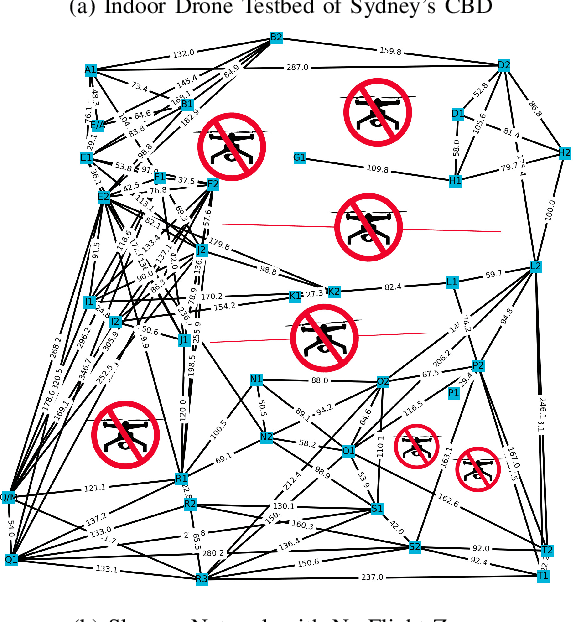
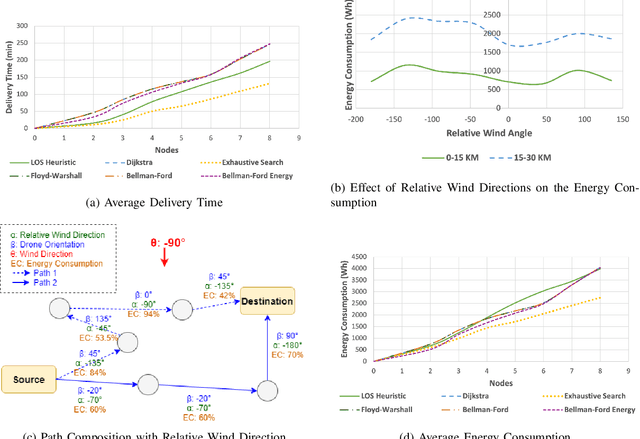
Abstract:We propose a novel context-aware drone delivery framework for optimizing package delivery through skyway networks in smart cities. We reformulate the problem of finding an optimal drone service delivery pathway as a more congruent and elegant drone delivery service composition problem. In this respect, we propose a novel line-of-sight heuristic-based context-aware composition algorithm that selects and composes near-optimal drone delivery services. We conducted an extensive experiment using a real dataset to show the robustness of our proposed approach.
Service-based Trajectory Planning in Multi-Drone Skyway Networks
Mar 21, 2023Abstract:We present a demonstration of service-based trajectory planning for a drone delivery system in a multi-drone skyway network. We conduct several experiments using Crazyflie drones to collect the drone's position data, wind speed and direction, and wind effects on voltage consumption rates. The experiments are run for a varying number of recharging stations, wind speed, and wind direction in a multi-drone skyway network. Demo: https://youtu.be/zEwqdtEmmiw
Drone Formation for Efficient Swarm Energy Consumption
Mar 16, 2023Abstract:We demonstrate formation flying for drone swarm services. A set of drones fly in four different swarm formations. A dataset is collected to study the effect of formation flying on energy consumption. We conduct a set of experiments to study the effect of wind on formation flying. We examine the forces the drones exert on each other when flying in a formation. We finally identify and classify the formations that conserve most energy under varying wind conditions. The collected dataset aims at providing researchers data to conduct further research in swarm-based drone service delivery. Demo: https://youtu.be/NnucUWhUwLs
Monitoring Efficiency of IoT Wireless Charging
Mar 10, 2023Abstract:Crowdsourcing wireless energy is a novel and convenient solution to charge nearby IoT devices. Several applications have been proposed to enable peer-to-peer wireless energy charging. However, none of them considered the energy efficiency of the wireless transfer of energy. In this paper, we propose an energy estimation framework that predicts the actual received energy. Our framework uses two machine learning algorithms, namely XGBoost and Neural Network, to estimate the received energy. The result shows that the Neural Network model is better than XGBoost at predicting the received energy. We train and evaluate our models by collecting a real wireless energy dataset.
 Add to Chrome
Add to Chrome Add to Firefox
Add to Firefox Add to Edge
Add to Edge